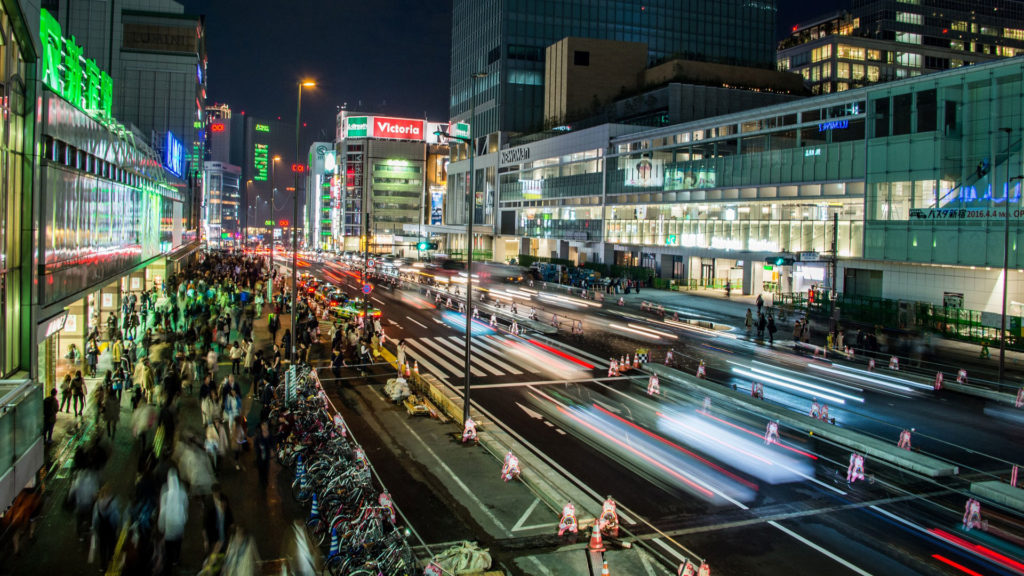- Infrastructure improvements, including road design, maintenance, and vertical utilization, significantly enhance road safety.
- Clear and visible road markings provide critical guidance for motorists, cyclists, and pedestrians.
- Technology, including intelligent traffic systems, automated vehicles, and drone monitoring, is pivotal in reducing accidents.
- Safe driving habits and following traffic rules are key personal contributions to road safety.
Road safety is essential to everyday life and critical in sustaining individuals’ and communities’ health and well-being. Each year, nearly 1.35 million people lose their lives as a result of road traffic accidents, according to the World Health Organization. This makes road traffic injuries the eighth leading cause of death globally and the first cause among people aged 5-29. These figures underline the importance of implementing effective road safety measures to reduce these preventable tragedies and ensure safe transportation for all.
However, making the road safer is a complex task that requires a comprehensive and multi-faceted approach. No solution can be applied to all situations, as each country and community has unique challenges and needs regarding road safety. Therefore, it is crucial to understand the critical essential strategies for making the road safer for everyone. Here are a few key strategies that can make a significant impact on road safety:
Infrastructure Improvement

Improving infrastructure is a fundamental strategy in enhancing road safety. Well-designed and maintained roads can significantly reduce the risk of accidents by providing precise and safe paths for vehicles, cyclists, and pedestrians. Infrastructure improvements can also include efficient traffic management systems that ensure smooth traffic flow, reducing the likelihood of collisions and congestion.
Design Roads for Safety
When designing or upgrading roads, safety should be a priority. This can involve incorporating features like speed bumps, roundabouts, and pedestrian crosswalks to slow traffic and enhance pedestrian safety. Adequate signage and lane markings are also crucial to guide drivers and prevent confusion that could lead to accidents.
Regular Maintenance
Regular maintenance of roads is crucial in ensuring safety. This includes repairing potholes, replacing worn-out signs, and keeping roadways free of debris. Poorly maintained roads can lead to vehicle damage and accidents. Periodic inspection and prompt repair of road damage can significantly enhance road safety.
Safe Spaces for Pedestrians and Cyclists
Infrastructure improvement should also consider non-motorized road users. Providing safe spaces for pedestrians and cyclists, such as sidewalks and bike lanes, can significantly enhance their safety. Additionally, these features encourage more people to walk or cycle, potentially reducing the number of vehicles on the road and, thus, the risk of accidents.
Vertical Utilization
In highly dense areas, vertical utilization can be an effective strategy in enhancing road safety. This involves building over or underpasses for pedestrians and cyclists to cross busy roads safely. These structures reduce the risk of accidents involving non-motorized road users and improve traffic flow by minimizing interruptions.
Clear Road Markings

Clear road markings are a vital aspect of road safety, serving as visual aids to direct and guide motorists, cyclists, and pedestrians. Road markings provide critical information about the road layout ahead, allowing for safe maneuvering and navigation. They delineate driving lanes, indicate turning and merging lanes, alert drivers to potential hazards, and inform pedestrians where it’s safe to cross.
Ensuring the visibility and clarity of road markings is paramount. Over time, these markings may fade due to exposure to weather elements, heavy traffic, and normal wear and tear. Therefore, regular maintenance and repainting should be undertaken to keep these markings clear and visible. Additionally, using high-quality, durable paint can increase the lifespan of road markings, reducing the frequency of reapplication.
Furthermore, intersection visibility for pedestrian usage can be enhanced by implementing high-visibility crosswalks. These can include zebra crossings, ladder-style markings, or reflective thermoplastic road markers, which are highly noticeable to approaching drivers.
Advanced technologies such as LED in-road markers can also enhance visibility under adverse weather conditions or at night. These systems use bright, energy-efficient lights embedded into the pavement to delineate lanes and crosswalks and highlight potential hazards, significantly increasing road safety.
Technology Utilization
Technology plays an increasingly significant role in enhancing road safety in today’s digitally connected world. Advanced technologies are being utilized to monitor and manage traffic, alert drivers to potential hazards, and even autonomously control vehicles to prevent accidents.
Intelligent Traffic Management Systems
Traffic management systems, equipped with AI and machine learning algorithms, can gather real-time data and use it to optimize traffic flow, reducing congestion and the potential for accidents. These systems can dynamically adjust traffic signals to respond to current conditions, prioritize emergency vehicles, and provide drivers with real-time information about traffic delays or hazards.
Automated Vehicles and Advanced Driver Assistance Systems (ADAS)
Automated vehicles and ADAS are at the forefront of technology utilization to make roads safer. Features such as adaptive cruise control, lane-keeping assist, and automatic emergency braking can significantly reduce collision risk by taking over drivers’ power in critical situations. While still in the developmental stage, autonomous vehicles promise to enhance road safety by eliminating human error, a leading cause of accidents.
Vehicle-to-Vehicle (V2V) and Vehicle-to-Infrastructure (V2I) Communication
V2V and V2I communication technologies allow vehicles and infrastructure to exchange information, creating an interconnected transportation network that preemptively identifies and mitigates potential risks. For example, a car could alert others near a sudden stop, or a traffic light could inform approaching vehicles of an impending color change.
Use of Drones for Traffic Monitoring
Drones, equipped with high-resolution cameras and sensors, monitor traffic conditions, detect accidents, and even deliver emergency medical aid. By providing a bird’s eye view of the road, drones can help traffic management centers respond more quickly and effectively to incidents.
Final Thoughts
Effective road safety strategies require a multi-faceted approach involving infrastructure improvement, clear road markings, and technology utilization. While these measures can significantly reduce accidents and fatalities on the road, everyone has a role to play in making the streets safer. Safe driving habits, such as wearing seatbelts, avoiding distractions, and following traffic rules, can also ensure safe transportation. Let us work together to make our roads safer and prevent needless loss of life.


